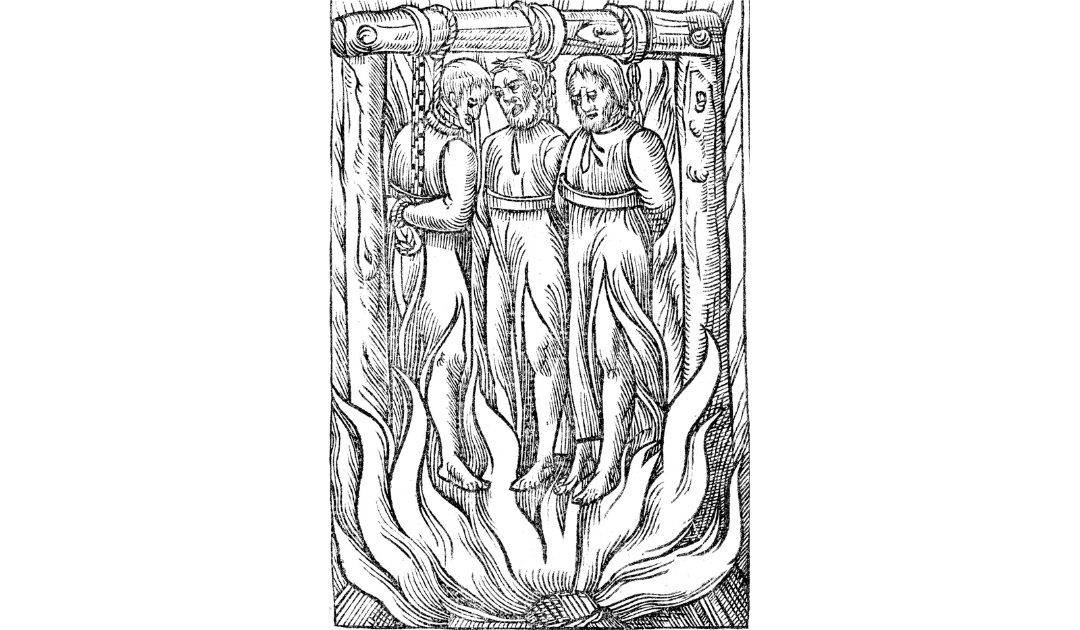On the 23rd of May, 1498, Girolamo Savonarola was hung and burnt in Florence. I’m sure that my ancestor, Sir Anthony Standen, an Elizabethan Spy, would have heard of him as he spent the years 1580 to 1587 in Florence working for the Duke of Florence. It would have been relatively recent history. Girolamo Savonarola was an Italian Dominican friar and preacher active in Renaissance Florence, renowned for his fiery sermons and staunch criticism of moral corruption within the church and society. His fervent advocacy for religious reform and his role in the political sphere paint a complex picture of a man who, despite his austere piety, became both a spiritual beacon and a controversial figure in late 15th-century Italy.
Early Life and Rise to Prominence
Born on 21st of September, 1452, in Ferrara, Italy, Savonarola was drawn to religious life from a young age. His early years were marked by an intense devotion to theological study and an increasing disillusionment with the secular opulence of his surroundings. In 1475, he joined the Dominican Order in Bologna, where he was influenced by the order’s emphasis on preaching and poverty.
Savonarola’s intellectual rigor and unyielding commitment to spirituality quickly elevated him within the ranks of the Dominican friars. By 1482, he had been sent to Florence, where he would later become the prior of the San Marco monastery. It was here in Florence—a city synonymous with the cultural flourishings of the Renaissance—that Savonarola’s voice would resonate most powerfully, calling for a return to Christian values and for thorough reform in both the church and society.
Preaching and Reform
Savonarola’s sermons were distinct in their passionate, almost apocalyptic tone. Unlike other preachers of the time, he spoke directly and harshly against the excesses of the church, particularly the papacy, and the moral decay he perceived in Florentine society. He denounced the pursuit of wealth, vanity, and luxury, and his messages found a receptive audience among those disenchanted with the prevailing corruption and secularism.
His calls for reform were both spiritual and civic. Savonarola envisioned a purer, more devout society, echoing the simplicity and piety of early Christianity. His influence grew significantly after the fall of the Medici family in 1494, which saw him assume a pivotal role in the political restructuring of Florence. Under his guidance, the city enacted laws reflecting his moral ideals, including measures against public immorality and extravagant displays of wealth.
The Bonfire of the Vanities
One of the most dramatic and emblematic events associated with Savonarola was the Bonfire of the Vanities in 1497. Encouraging his followers to purge themselves of sinful attachments, he orchestrated the burning of books, art, and other items deemed to incite vanity and corruption. This event starkly illustrated his commitment to his beliefs, even as it polarized public opinion.
However, this period of Savonarola’s influence was not without its challenges. His outspoken criticism of the Pope and his refusal to align with the broader ambitions of the Catholic Church drew the ire of Pope Alexander VI. In 1497, Savonarola was excommunicated, a significant blow that marked the beginning of his downfall.
Downfall and Legacy
The final years of Savonarola’s life were tumultuous. Though excommunicated, he continued to preach and maintain his following in Florence. However, political tides turned against him, culminating in his arrest in 1498. Subjected to torture and trial, Savonarola was convicted of heresy and executed by hanging and burning on the 23rd of May 1498.Savonarola’s legacy is as controversial as his life. To some, he is remembered as a pious reformer who challenged the moral and institutional decay of his time. To others, he is seen as an overzealous radical whose rigid dogmatism and rejection of humanist values led to cultural repression. Despite the duality of his legacy, Savonarola’s impact on the religious landscape of Renaissance Italy is undeniable. His life raises enduring questions about the balance between faith and reason, individual belief and institutional power. Savonarola’s story is a reminder of the complexities of religious reform and the potent, sometimes destructive forces of charisma and conviction.
In an era where the church’s moral authority was increasingly questioned, Savonarola stands as a figure who, through his fervent faith, sought to reshape the world according to his vision of divine justice, leaving a lasting impression on both the religious and cultural history of Italy.

